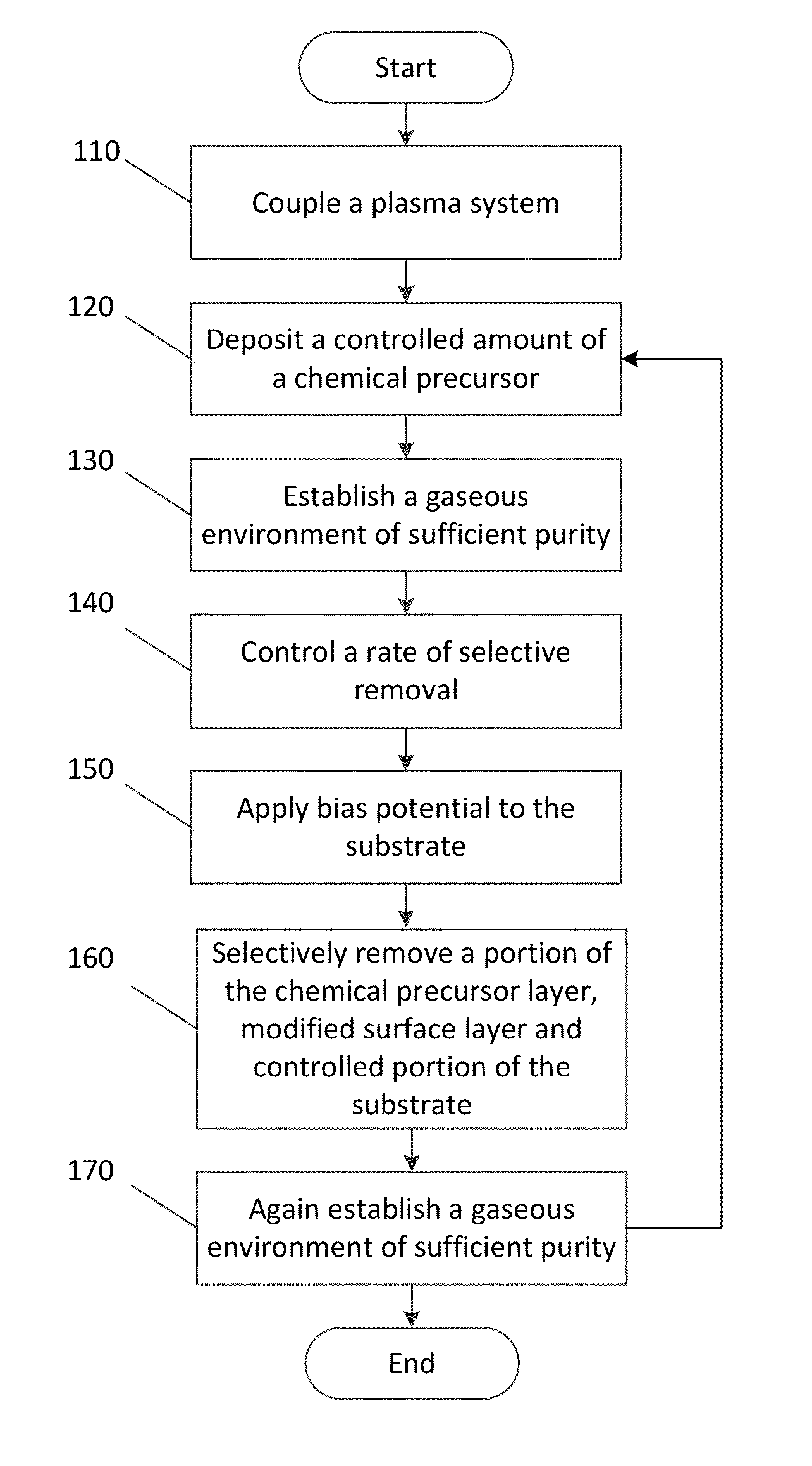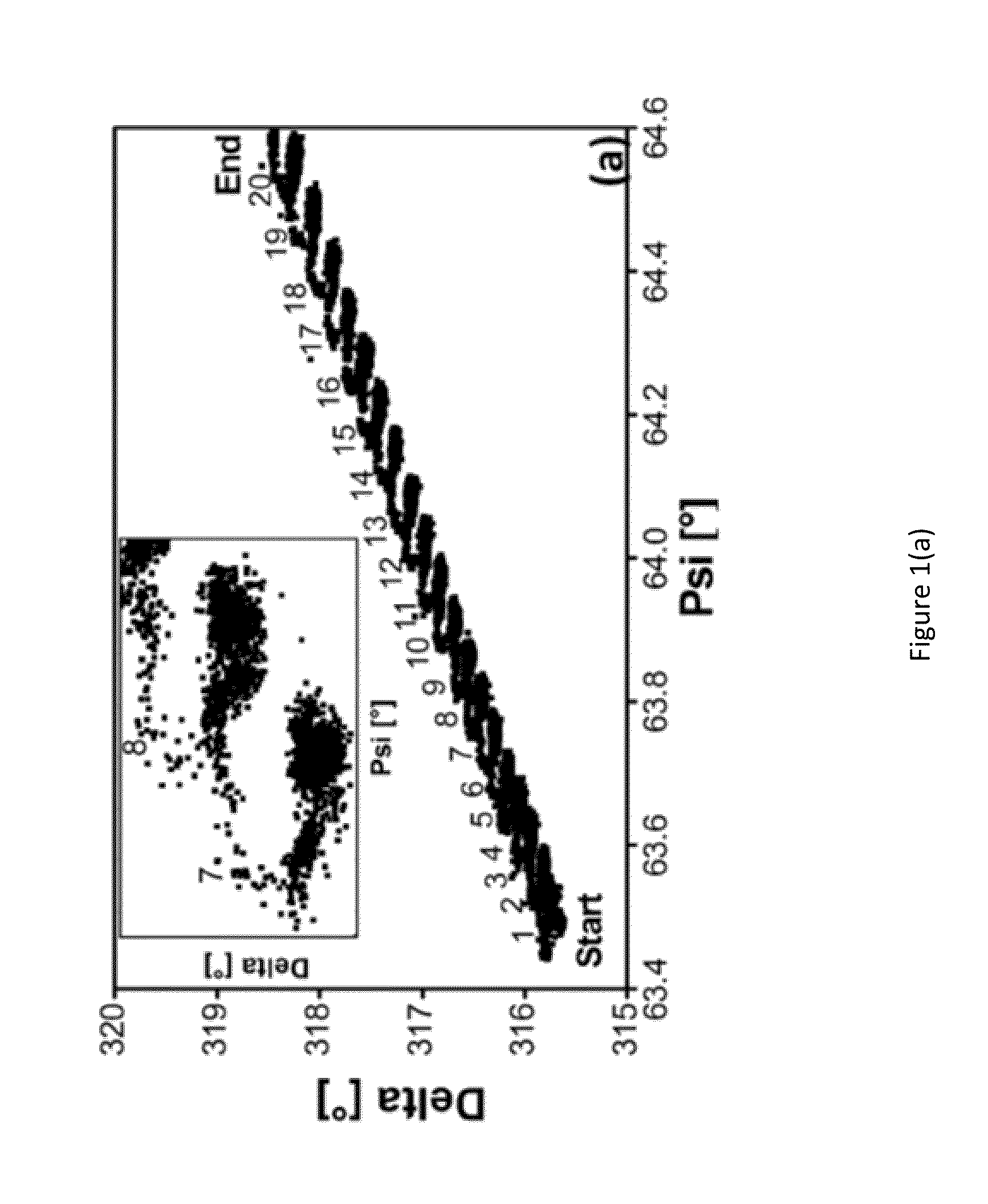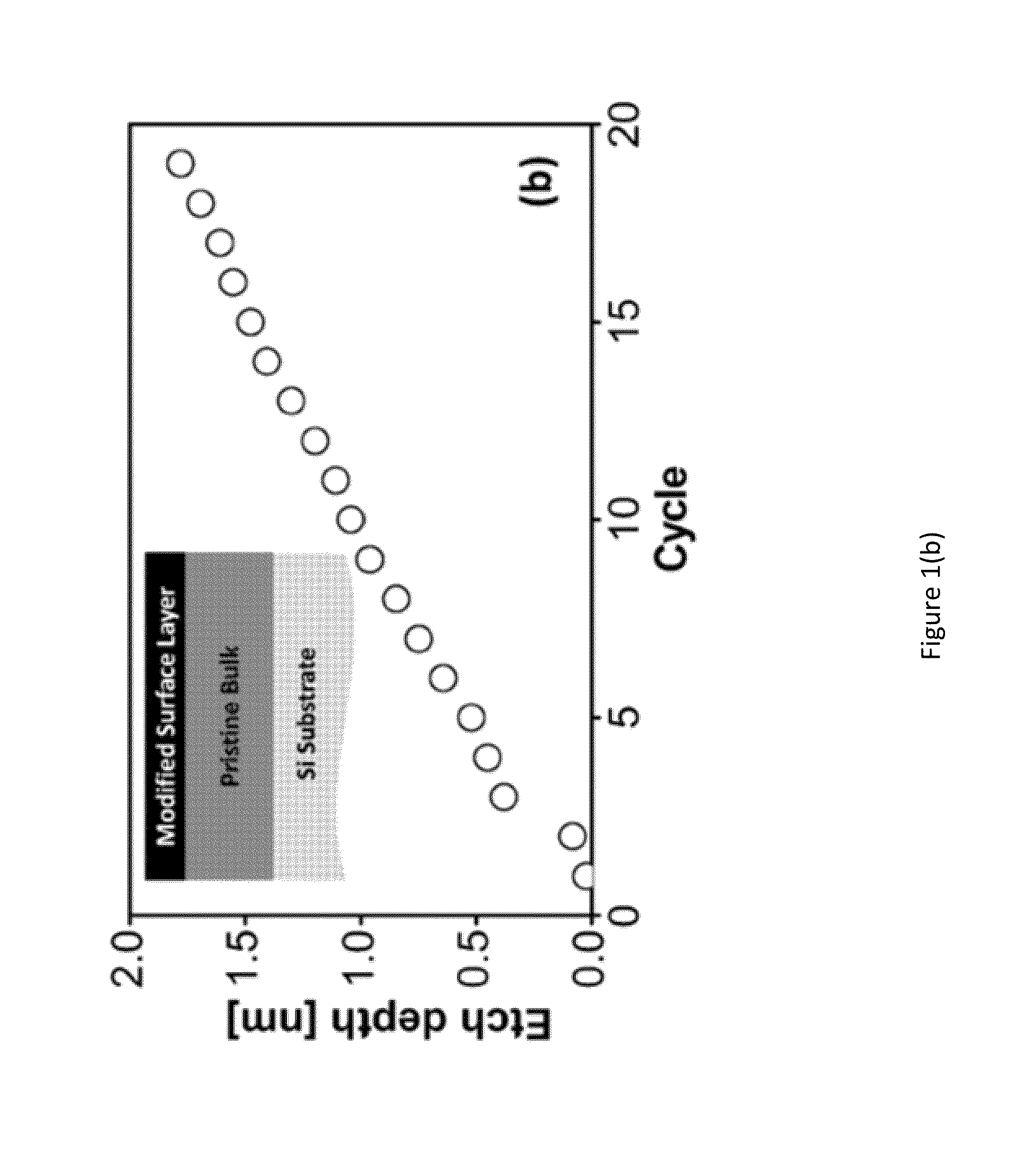Reactor for plasma-based atomic layer etching of materials
a technology of atomic layer etching and plasma, which is applied in the direction of coatings, chemical vapor deposition coatings, electric discharge tubes, etc., can solve the problems of insignificant physical sputtering of unmodified materials after etching, and inability to achieve self-limited etching
- Summary
- Abstract
- Description
- Claims
- Application Information
AI Technical Summary
Benefits of technology
Problems solved by technology
Method used
Image
Examples
Embodiment Construction
[0030]According to certain embodiments, it may be possible to study and evaluate the use of cyclic plasma interacting with a substrate. For example, cyclic Ar / C4F8 plasma interacting with a substrate can be explored to determine for what conditions controlled removal of substrate layers approaching one atomic layer thickness per cycle can be achieved. Conditions for the removal of substrate layers ranging from about 1 / 10 of an angstrom to about 1 nm can be achieved. In other embodiments, time-resolved surface characterization can be implemented to confirm ALE.
[0031]The term atomic layer etching, as used herein, can broadly refer to the level of layer dimensional control that can be achieved at the angstrom level. Thus, atomic layer etching may generally correspond to the size of atoms. Additionally, the average removed layer thickness / cycle can be less than 1 angstrom per etching cycle, or more than 1 angstrom / cycle.
[0032]Various substrates may be used in studying and evaluating the...
PUM
| Property | Measurement | Unit |
|---|---|---|
| Thickness | aaaaa | aaaaa |
| Thickness | aaaaa | aaaaa |
| Thickness | aaaaa | aaaaa |
Abstract
Description
Claims
Application Information
 Login to View More
Login to View More - R&D
- Intellectual Property
- Life Sciences
- Materials
- Tech Scout
- Unparalleled Data Quality
- Higher Quality Content
- 60% Fewer Hallucinations
Browse by: Latest US Patents, China's latest patents, Technical Efficacy Thesaurus, Application Domain, Technology Topic, Popular Technical Reports.
© 2025 PatSnap. All rights reserved.Legal|Privacy policy|Modern Slavery Act Transparency Statement|Sitemap|About US| Contact US: help@patsnap.com



